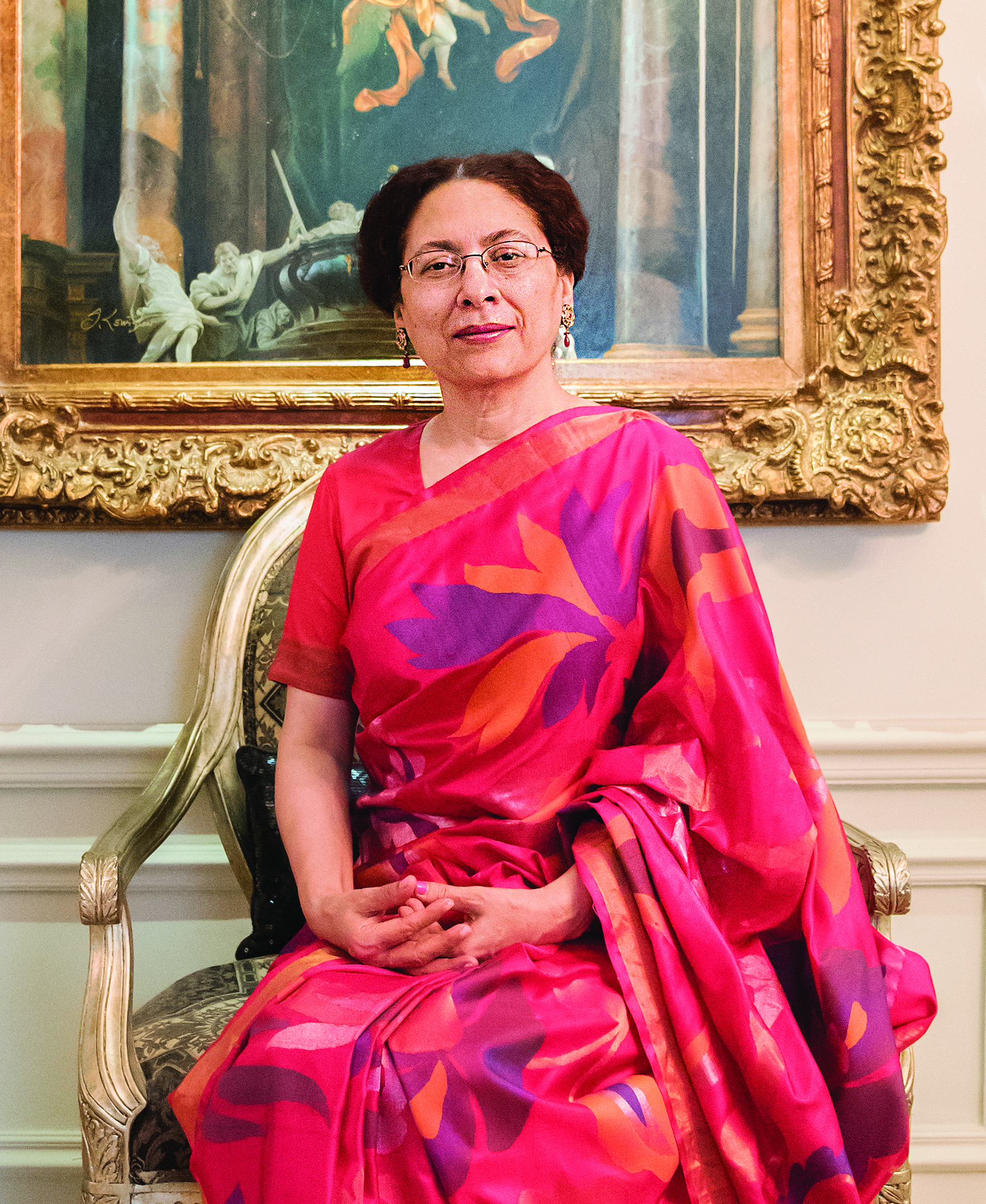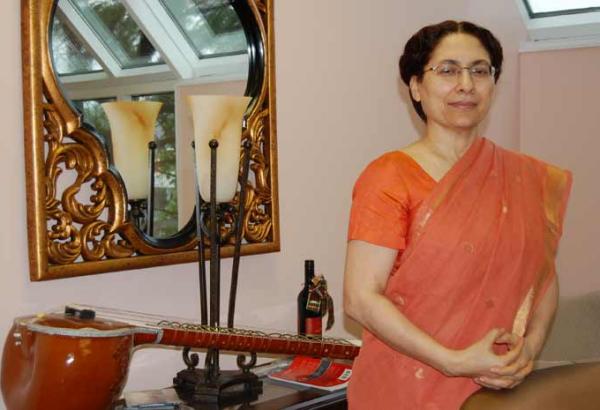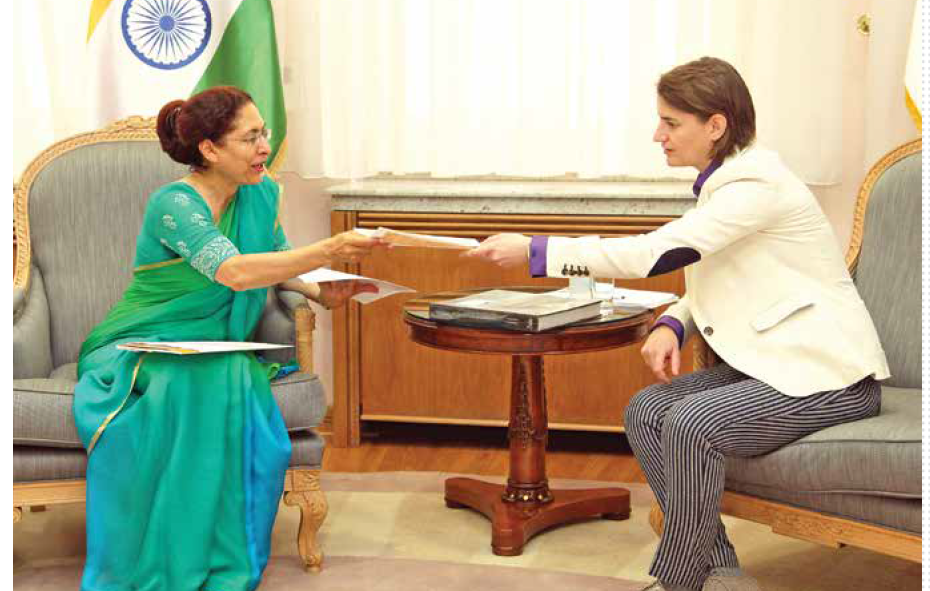In our effort to enhance business opportunities, the India-Serbia Business Forum was launched in June 2016 followed by second meeting in February 2017 where duty differential for Indian imports and complex registration procedures for Indian pharma products were identified as some of the hurdles

The fundamental principle of Indian government is digital enablement of the services which has led to inception of the ‘Digital India’ program. India is also focusing on Digital Tourism with the introduction of e-Visa facility which has been extended to 161 countries. The India-Serbia trade & investment scenario received a significant boost at the beginning of 2017 when Hon’ble Aleksandar Vučić visited. Also, India Culture is the key to peoples’ hearts. Serbia has always been pro-India, cherishing Indian culture, Yoga, Ayurveda, as well as our films, TV serials and cuisine, said H.E. Narinder Chauhan, Indian Ambassador in Serbia.

India is stepping deep into the digital society. What are the recent achievements, since one year is a long period in such a fast technology?
― The fundamental principle of Indian government is digital enablement of the services which has led to inception of the ‘Digital India’ program. Digital India is a globally unprecedented path-breaking initiative of the Indian Prime Minister to modernize the Indian economy, to improve Indian society and to radically transform the quality of governance by the creative use of digital technology. This flagship programme is travelling in the right path. Every Indian Minister and every Ministry is now on Twitter, Facebook etc. The e-governance measures like digital locker, Bharatnet (Optical Fibre network), e-sign, and feedbacks through web (mygov.in) are some notable initiatives. India has become the 2nd largest market of smartphones in the world. With increased penetration of mobile, they become obvious choice for attaining inclusiveness in sectors like financial, education, healthcare to name a few. India has climbed up 11 positions in UN e-Governance index since 2014. Government has started world’s largest biometric based digital identity “Aadhaar” which has over 1.1 billion registered users. The Digital India program also supports the ‘Make in India’ program which has been launched globally. The major changes in the technology space have not only brought changes to the economic system but are also contributing to the environmental changes. The next generation technologies are helping in lowering the carbon footprint by reducing fuel consumption, waste management, greener workplaces and thus leading to a greener ecosystem. India is also focusing on Digital Tourism with the introduction of e-Visa facility which has been extended to 161 countries. E-visa was extended to Serbia in Feb 2016 and is gaining popularity. India can play an important role in developing e-Government in Serbia. We can share vision, approach, strategy, implementation methodology and management structure needed for developing and evolving e-Government. Implementation of bilateral MoU on IT & Electronics will ensure enhanced cooperation in the field of e-Governance. Serbian nationals can benefit from the ITEC training. We are ready to dovetail our experiences with Prime Minister of Serbia, Hon’ble Ana Brnabić’s vision of digitalization, a priority of her government.

Serbia has been a host of numerous cultural events from India, organized by Indian Embassy, like concerts, dance ensembles and the International Yoga Day. Do you think that the perception of the public is shifted how?
― Culture is the key to peoples’ hearts. Serbia has always been pro-India, cherishing Indian culture, Yoga, Ayurveda, as well as our films, TV serials and cuisine. I think that we have been able to successfully connect the cultures of our two countries and we tried to bring India closer to Serbia through dance, art, photographs, films, etc. The Indian cultural manifestations we bring to Serbia are very popular and draw full houses. Recently, the Kriyative Theatre Group participated in INFANT Festival and BELEF Festival. Indian folklore ensemble from Punjab participated in FIDAF ‘’Belgrade Award’’. In August, we will be having performances of the renowned Bharatnat-yam dancer Ms. Geeta Chandran and her group will give 70th Independence Day concert. Local population has noted our regular appearance at the International Tourism Fair, International Book Fair, Auteur Film Festival, Ethnic Food & Drinks Fair etc. Growing Serbian interest in India is evident by the institution of Hindi Chair at University of Novi Sad and India studies at Belgrade University. There is close collaboration in the field of films and film shootings have begun both ways. Interest in Yoga & Ayurveda is boosted by successive International Day of Yoga events every June followed by Ayurveda & Homeopathy workshops.
How do you rate the economic exchange between the two countries after recent impetuses by the two governments and the Embassy?
― The India-Serbia trade & investment scenario received a significant boost at the beginning of 2017 when Hon’ble Aleksandar Vučić visited India. In our effort to enhance business opportunities, the India-Serbia Business Forum was launched in June 2016 followed by second meeting in February 2017 where duty differential for Indian imports and complex registration procedures for Indian pharma products were identified as some of the hurdles. Very constructive ideas have emerged from the Working Group on Agriculture where India expressed interest in import of pulses, soybean, oil seeds and Serbia emphasized on export of fruits & vegetables to India apart from import of agriculture machinery. India made expression of interest in importing copper & gold from Serbia during the 3rd session of Joint Economic Committee. The possibility of entering into an agreement between Medicines and Medical Devices Agency of Serbia (ALIMS) and Indian agency, the Central Drugs Standard Control Organization (CDSCO) for cooperation in issues of quality of medicines was also discussed. The Joint Video Conferencing S&T Session identified (i) New materials and Nanotechnology, (ii) Energy and Energy efficiency, (iii) Information and Communication Technologies, (iv) Health and (v) Biotechnology for food security. Under the recently signed bilateral MoU on IT & Electronics, cooperation will be enhanced by using IT as a tool to improve public service delivery. Concrete projects will be identified during the forthcoming meeting of the working group on IT & Electronics. A systematic outreach of Indian businesses to the various sectors in Serbia is a priority for expanding economic ties. Indian companies are looking at privatization opportunities in Serbia including in infrastructure, agro-machinery and pharma. The recent high-level visits from both countries are positive developments.
The world’s next center of culture, economy and science is in Asia. In fact, after the collapse of South America and the slow growth in the West, it is already in Asia. Give us your projection of the future?
― Asia is considered the driving engine for global economic growth and is set to remain the world’s biggest contributor to global growth in 2017. South Asia will remain the fastest-growing sub region, with rising GDP growth, led by India, the largest economy in the region. The fundamentals of the Indian economy remain strong, with robust economic growth, strong fiscal consolidation, low current account deficit, higher agricultural output, growing FDI, low inflation, etc. India’s economy has also benefited from ongoing market reforms that have improved competitiveness. Implementation of Goods & Services Tax (GST) on 1st July 2017 will help to create a unified common national market for India, giving a boost to foreign investment and “Make in India” campaign. It will boost export and manufacturing activity, generate more employment and thus increase GDP with gainful employment leading to substantive economic growth. The new tax regime is expected to add 2% in GDP growth rates annually. Demonetization of higher currency notes has the potential to accelerate the formalization of the economy, leading to higher tax collections, and greater digital financial inclusion.
How did the Indian investments in Serbian economy grow recently?
― The visit of Hon’ble Aleksandar Vučić to India in January 2017 for Vibrant Gujarat Summit where he held discussions with Prime Minister Narendra Modi and business community, has invigorated economic ties and coming after 30 years, filled a gap in visits. We have seen a spike in visits by big business houses led by Ambanis, TATAs & GMR. Indian companies based in UAE have also begun investment in Serbia. Another kind of ecosystem is fast developing with growing exchange of visits between Indian & Serbian tech companies. A notable example of growing cooperation is participation by Serbian subsidiary Schneider Electric DMS NS in the Smart City Project of the Government of India.
Incredible India was an excellent campaign for Indian tourism. Did the number of Serbian tourists increase? And vice versa?
― There is a gradual rise in the numbers of Serbians visiting India and our newly introduced electronic visa (eVisa) facility is gaining popularity. Reciprocal visits of tour operators will help promote organized tours. Air Services Agreement has been revised and Indian film shootings have begun which will help build tourism to Serbia.